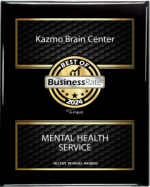Most of us have experienced some form of loss at some point in our lives. Regardless of our perspectives, grief and loss are inescapable parts of life. Life is the most significant cause of death.
In his first book, John Bowlby wrote about the importance of Attachment. He noted that in times of loss, our system is activated. This concept helped people cope with their sorrow and regain their sense of security.
For most people, attachment styles are patterns of behavior and thinking that help them maintain connections with their significant others.
In which patterns do children adapt to their environments?
1-Avoidant Attachment.
When parents avoid their children’s need for closeness, they will learn to avoid negative feelings and develop avoidant Attachment. This will allow them to feel secure in their relationships. They can also win in sports and academics by developing these skills.
2-Anxious Attachment.
Children tend to develop an anxious attachment style when parents are inconsistent in their approach to their kids. This is because they will try to keep themselves secure by monitoring their parents’ moods. This type of behavior can help them avoid experiencing rejection.
In addition to coping with their parents’ fluctuating moods, these kids also develop strategies to prevent rejection.
They try to remain close to their loved ones but also have difficulty dealing with loss. They often feel like they have no idea why they lost.
3-Disorganized Attachment.
Terrified parents (traumatized, victimized, terrorized) or intimidating (bullied, abusive, irrational) will not be able to create structured coping mechanisms or adaptations for their children.
In this unpredictable environment, children develop “disorganized” attachment styles, which adults call “fearful.”
The Adult Attachment Interview, which assesses attachment types, categorizes this style as “unresolved” by loss and trauma.
In later stages of life, these people have difficulty dealing with losses because they could not deal with them properly earlier in life.
PTSD (Post Traumatic Stress Disorder), unresolved traumas in childhood are the biggest predictor of the disorder later in life.
4-Secure Attachment.
Children do not need to do much to maintain the stability of their parental connections if their parents are reliable, accessible, and attentive.
They can connect readily, perceive and respond to others appropriately, and healthily manage their emotions and behaviors thanks to their secure attachment styles.
Attachment perspective
Most of us have various ways of coping with loss and trauma.
The details surrounding the death of a loved one have a significant impact on how we absorb these traumatic experiences and proceed through the mourning process. Our bereavement reactions are likely to differ from those around us.
People who have lost a loved one to suicide are unlikely to experience as much post-traumatic growth since they cannot speculate about the reasons behind the decision.
Parents grieving the loss of a child, along with those who have lost a loved one through suicide or unexpected death, are prone to sense intense sorrow.
Relationships between attachments and losses
Meier’s research has shown that attachment types consistently predict mental health.
The ability to cope with stressful situations and hard life events, such as losing a loved one, is essential.
According to Meier, “when stress is more painful, deactivating, and denial strategies fail more often, it can lead to grief incapacity.”







